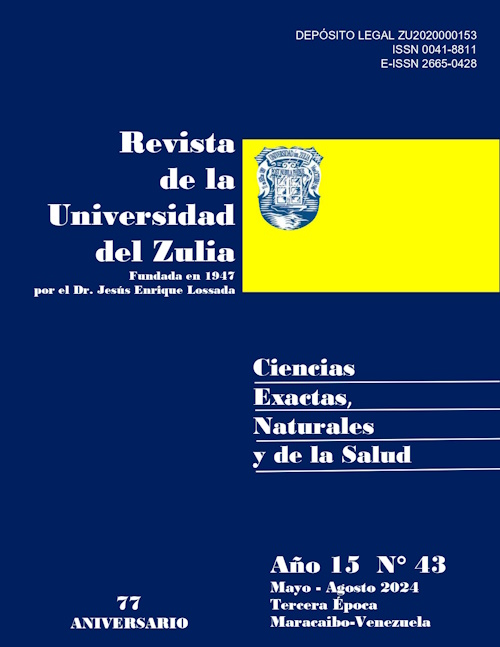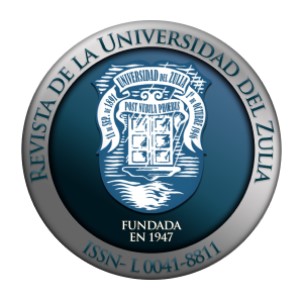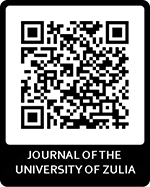Approach to the Categories: Spirituality, Health and Wellbeing. A Look at the Techniques that Promote Them
Abstract
Psychological, social, behavioral, and biological factors have been investigated as possible protective or detrimental characteristics for health and well-being, but their influences or relationships with spirituality have not been largely examined in health research; Hence, the objective of this research was to establish an approach to the study of the categories of Spirituality, Health and Well-being, their possible interrelation, as well as to examine the techniques that promote it based on a review of the scientific literature of various theorists. In conclusion, the results showed with respect to the conceptualization of Spirituality that even though there is no consensus, the authors agree that it is assumed as a multidimensional and essential category in the human being as an individual experience, a way of life that includes values and beliefs. A relationship was also found between spirituality and health improvement, along with a close link between spirituality and well-being, with a diversity of techniques that contribute to well-being and this can be achieved by promoting spirituality.
Downloads
References
Black, Lindsey I., Barnes, Patricia M., Clarke, Tainya C., Stussman, Barbara J., and Nahin, Richard L. (2018) Use of Yoga, Meditation, and Chiropractors Among U.S. Children Aged 4–17 Years. NCHS Data Brief. No. 324. U.S. Department of Health and Human Services. Centers for Disease Control and Prevention National Center for Health Statistics [En línea]: https://www.cdc.gov/nchs/data/databriefs/db324-h.pdf
Carmo, K. B. do .. (2022). Espiritualidade aplicada à medicina. Revista Bioética, 30(4), 870–882.https://doi.org/10.1590/1983-80422022304577PT
Clarke, Tainya C., Barnes, Patricia M., Black, Lindsey I., Stussman, Barbara J. and Nahin, Richard L. (2018) Use of Yoga, Meditation, and Chiropractors Among U.S. Adults Aged 18 and Over. NCHS Data Brief. No. 325. U.S. Department of Health and Human Services. Centers for Disease Control and Prevention National Center for Health Statistics. [En línea]: https://www.cdc.gov/nchs/data/databriefs/db325-h.pdf
Cornejo Valle, Mónica; Martín-Andino Martín, Borja; Esteso Rubio, Carolina & Blázquez Rodríguez, Maribel (2019). El giro saludable: sacrificio, sanación, bienestar y su relación con la espiritualidad contemporánea. Athenea Digital, 19(2), e2125. https://doi.org/10.5565/rev/athenea.2125
Cotton, S.P., Levine, E.G., Fitzpatrick, C.M., Dold, K.H. y Targ, E. (1999). Exploring the relationships among spiritual well-being, quality of life, and psychological adjustment in women with breast cancer. Psychooncology, 8(5), 429-438.
Cramer, Holger, Lauche, Romy, Klose, Petra, Lange, Silke, Langhorst, Jost y Dobos, Gustav (2017). Yoga para mejorar la calidad de vida relacionada con la salud, la salud mental y los síntomas relacionados con el cáncer en mujeres diagnosticadas con cáncer de mama. Cochrane Database of Systematic Reviews, 1 (1), CD010802. [En línea]: https://doi.org/10.1002/14651858.CD010802.pub2
Dantas de Carvalho, Clarissa y Da Silva C., Nágela M. (2011) Aplicabilidad del yoga como recurso terapéutico, junto a las mujeres en el proceso de deshabituación del diazepam. Revista Chilena De Terapia Ocupacional, 11(1), Pág. 19 – 27. [En línea]: https://doi.org/10.5354/0719-5346.2011.17079
Desai, Krupali, Bowman, Marjorie, Galantino, María, Hughes-Halbert, Chanita, Vapiwala, Neha, Demichele, Angela y Mao, Jun (2010). Predictores del uso del yoga entre pacientes con cáncer de mama. Explore (Nueva York, N.Y.), 6(6), 359–363. [En línea]: https://doi.org/10.1016/j.explore.2010.08.002
Frankl, Viktor (1999). El hombre en busca de sentido último. (I. Custodio, Trad.). Barcelona: Paidós. (Publicación original 1997) Relación entre la espiritualidad, el bienestar físico y el bienestar psicológico. Revista Griot (ISSN 1949-4742) Volumen 7, Número. 1, 2014. 17
Frankl, Viktor (2002). La voluntad del sentido: Conferencias escogidas sobre logoterapia. (M. J. Eckel, Trad.). Barcelona: Herder. (Publicación original 1982)
Fuentes, Leonides del C. (2018). La Religiosidad y la Espiritualidad ¿Son conceptos teóricos independientes? Revista de Psicología. Año 2018. Vol. 14, Nº 28, pp. 109-119. [En línea]: https://repositorio.uca.edu.ar/bitstream/123456789/8870/1/religiosidad-espiritualidad-conceptos.pdf
Gerone, Lucas Guilherme Teztlaff de (2020). Espiritualidad en el contexto de la ciencia de la salud. Revista Científica Multidisciplinar Núcleo do Conhecimento. Año 05, Ed. 09, Vol. 01, págs. 121-136. [En línea]:https://nucleodoconhecimento.com.br/wp-content/uploads/2020/09/Espiritualidad-en-el-contexto.pdf
Gonçalves, Mario, Duarte, Leonel, Rodrigues, Jorge, Greten, Henry y Machado, Jorge (2023). ¿Puede el Qigong ser una herramienta para ayudar a los estudiantes a manejar el estrés académico resultante de COVID-19? Salud (Basilea, Suiza), 11(3), 307. [En línea]: https://doi.org/10.3390/healthcare11030307
González-Rivera Juan A. (2019) Espiritualidad a lo largo de la vida: Implicaciones para la psicología. Capítulo 15. En: Desarrollo Humano: Travesía de Oportunidades y Retos. Asociación de Psicología de Puerto Rico. [En línea]: https://www.researchgate.net/publication/333223911_Espiritualidad_a_lo_largo_de_la_vida_Im plicaciones_para_la_psicologia
Hettler, Bill (1984). Wellness: Encouraging a lifetime pursuit of excellence. Health values: Achieving High Level Wellness, 8, 13-17
Lee, Myeong Soo, Kim, Mmo Kyung, y Ryu, Hoon (2009). El entrenamiento de Qi (qigong) mejora las funciones inmunes: ¿cuál es el mecanismo subyacente? Revista Internacional de Neurociencia, 115(8), 1099–1104. [En línea]: https://doi.org/10.1080/00207450590914347
Morales, Sandra. (2014). Relación entre la espiritualidad, el bienestar físico y el bienestar psicológico de los estudiantes universitarios. Revista Griot, 7(1), 7-18. [En línea]: https://dialnet.unirioja.es/servlet/articulo?codigo=7048887
Mueller, Paul S., Plevak, David J. y Rummans, Teresa A. (2001) Religious Involvement, Spirituality, and Medicine: Implications for Clinical Practice. Mayo Clin Proc, December, Vol 76. [En línea]: https://sci-hub.se/10.4065/76.12.1225
Myers, Jane y Sweeney Thomas (2007) Professional Counseling Digest ACAPCD-09 2007 Journal of Counseling & Development, 482-493. [En línea]: https://doi.org/10.1002/j.1556-6678.2008.tb00536.x
National Center for Complementary and Integrative Health-NIH (2023) Enfoques integradores para el manejo de los síntomas en pacientes y sobrevivientes de cáncer. En: Salud complementaria, alternativa o integrativa: ¿Qué hay en un nombre? [En línea]: https://www.nccih.nih.gov/health/complementary-alternative-or-integrative-health-whats-in-a-name
National Center for Complementary and Integrative Health-NIH (2017) Encuesta Nacional de Entrevistas de Salud 2017. [En línea]: https://www.nccih.nih.gov/research/statistics/nhis/2017
Navas Carmen y Villegas Hyxia (2006) Espiritualidad y salud. Revista Ciencias de la Educación. Año 6 z Vol. 1 z Nº 27 z Valencia, PP. 29-45. [En línea]: http://servicio.bc.uc.edu.ve/educacion/revista/volIn27/27-2.pdf
Organización Mundial de la Salud (OMS) (1964). Basic Documents 15th ed. Ginebra.
Palacio Vargas, Carlos Julián (2015) La Espiritualidad como Medio de Desarrollo Humano. Cuestiones Teológicas, Vol. 42, No. 98. pp. 459-481 [En línea]: https://revistas.upb.edu.co/index.php/cuestiones/article/view/251
Pinto, N. (2007). Bienestar espiritual de los cuidadores familiares de niños que viven enfermedad crónica. Investigación en Enfermería: Imagen y Desarrollo, 9(1), 20-35. [En línea]: https://www.redalyc.org/articulo.oa?id=145212858003
Powell, L. H., Shahabi, L., & Thoresen, C. E. (2003). Religion and spirituality: Linkages to physical health. American Psychologist, 58(1), 36-52. [En línea]: https://www.semanticscholar.org/paper/Religion-and-spirituality.-Linkages-to-physical-Powell-Shahabi/ad4376ef5c4121e6f868667ecbc87cecb36edf50
Ryff CD.(2021) Spirituality and Well-Being: Theory, Science, and the Nature Connection. Religions (Basel). 2021 Nov;12(11):914. [En línea]Doi 10.3390/rel12110914
Stephens, Ina. (2017). Terapia de yoga médico. Children, 4(2), 12. MDPI AG. [En línea]:http://dx.doi.org/10.3390/children4020012
Van Cappellen, Patty, Saroglou, Vassilis, Iweins, Caroline, Piovesana, Maria y Fredrickson, Bárbara (2013). Las emociones positivas autotrascendentes aumentan la espiritualidad a través de suposiciones básicas del mundo. Cognición y Emoción, 27(8), 1378–1394. [En línea]: https://doi.org/10.1080/02699931.2013.787395
Valls M. Maria del C., Grasso Mayra and Montero José (2022) Regional well-being inequalities arising from healthcare expenditure public policies in Spain. Frontiers Public Health 10:953827. [En línea]: https://doi.org/10.3389/fpubh.2022.953827
Vásquez M., Laura (2018) Beneficios de la práctica de yoga durante la menopausia. Revisión bibliográfica. ENE Revista de Enfermería. Vol. 12, 1, 684. 16--2020. [En línea]: https://scielo.isciii.es/pdf/ene/v12n1/1988-348X-ene-12-01-684.pdf
Vaze, Nirmala y Joshi, Sulabha (2010). Yoga y transición menopáusica. Revista de Salud de Mediana Edad,1(2), 56–58. [En línea]: https://doi.org/10.4103/0976-7800.76212
Copyright
The Revista de la Universidad del Zulia declares that it recognizes the rights of the authors of the original works published in it; these works are the intellectual property of their authors. The authors preserve their copyright and share without commercial purposes, according to the license adopted by the journal..
This work is under license:
Creative Commons Reconocimiento-NoComercial-CompartirIgual 4.0 Internacional (CC BY-NC-SA 4.0)
































